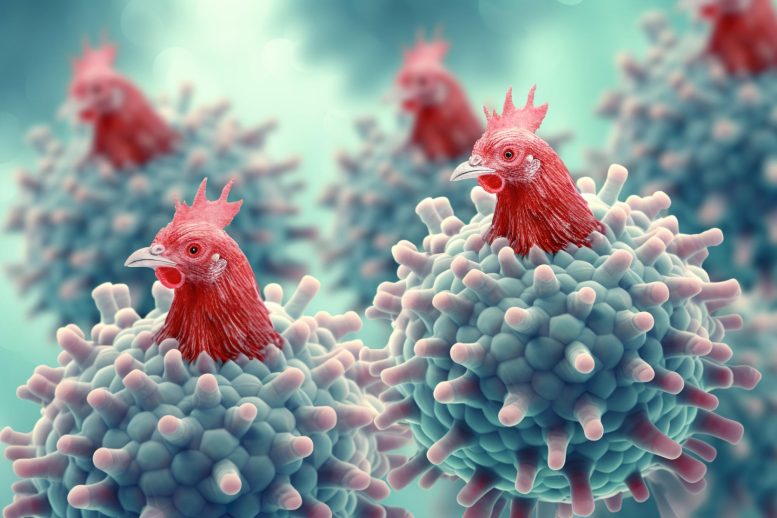Evolutionary Leap of a Chicken Virus Unveiled through Ancient DNA

A global team has utilized archaic DNA to examine the progression of the Marek’s Disease Virus (MDV), uncovering the virus's heightened virulence over time and delivering insights that may aid in better poultry disease management. This innovative research underlines the importance of archaeological evidence in understanding and combating viral infections.
Scientists from various parts of the world, which included geneticists and disease biologists from the University of Oxford and LMU Munich, have employed old DNA to study the evolutionary history of the MDV. This virus is a global pathogen causing fatal infections in unvaccinated chickens, resulting in over $1 billion in losses yearly for the poultry industry. Their recent research, documented in the journal Science, demonstrates how viruses can steadily become more harmful. This knowledge could lay the foundations for improved viral infection treatments.
The group, comprised of biologists and archaeologists, recovered and reconstructed ancient MDV sequences from archaeological chickens spanning the last 1,000 years. By contrasting viral genomes extracted from both contemporary and ancient birds, they identified the genetic changes that have made the current virus more harmful.
Using the old genetic sequences, they managed to recreate ancient biological processes using cellular assays, thus proving that old strains were significantly less forceful compared to their present-day equivalents.
This significant development not only illuminates the evolutionary history of the MDV, but it also promises advancements in the creation of more effective therapies against this damaging poultry disease.
The most recent study was based on DNA extracted from chicken bones unearthed from 140 archaeological sites across Europe and the Near East. These old genomes revealed that the MDV was common in European chickens at least 1,000 years before the disease was first formally identified in 1907. This draws attention to the importance of conserving archaeological remains, especially given their potential to deliver valuable insights into the evolution of virulence.
Electron Microscopy image of Marek’s disease virus particles replicating in the nucleus of an infected cell. Credit: The Bioimaging group, Pirbright Institute.
When the disease was first documented, it only triggered mild symptoms in older chickens. However, as chicken consumption soared in the 1950s and 1960s, the MDV evolved, becoming progressively more potent despite the creation of several vaccines.
The study's first author, Dr. Steven Fiddaman, from the Department of Biology, University of Oxford, stated that their findings not only reveal the evolutionary path of the MDV, but they also present an opportunity to enhance our present understanding of virulence in pathogens. The mix of ancient DNA techniques and contemporary genomics can cultivate future strategies for managing viral diseases.
Professor Naomi Sykes, from the University of Exeter and the study's main archaeologist, stated that the studies emphasize the immense significance of biological material preserved in archaeological and museum collections, as the future transformative applications of their investigation cannot be anticipated.
Co-senior author of this study, Professor Laurent Frantz from LMU Munich, suggested that their work stresses the impact of interdisciplinary collaboration, combining paleogeneticists, virologists, biologists, and archaeologists to uncover the complex evolutionary history of a disease with significant economic and agricultural ramifications.
Professor Greger Larson from the University of Oxford, another co-senior author, noted that it's fascinating to witness how mitigating diseases often results in selection pressure that enhances a virus's virulence. Sequencing ancient virus genomes reveals just how the MDV's virulence has dramatically increased over the last 100 years.
Professor Adrian Smith from the Department of Biology, University of Oxford, mentioned that ancient DNA has offered a unique perspective on the MDV's emergence as a deadly chicken virus. This could lead to lessons applicable to the control of other medically and veterinary important viral infections.
Scientist Emeritus at The Pirbright Institute, Professor Venugopal Nair, stated the discovery about the origin of virulence, especially linked to the genetic sequences of ancient Marek’s Disease Viruses, will provide significant scientific prospects to explore the molecular mechanisms of the virus's increasing virulence since the intensification of poultry farming in the 1960s.




